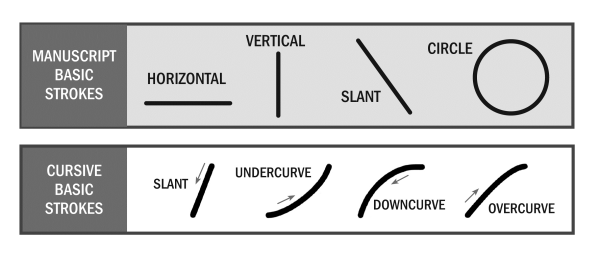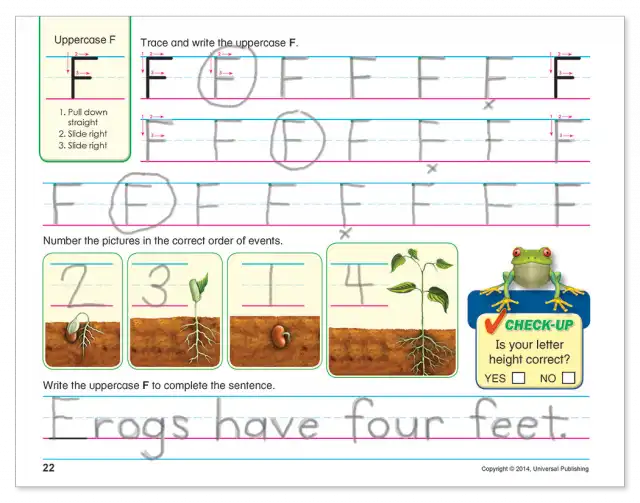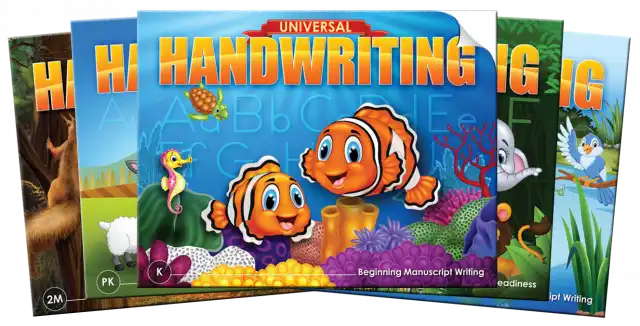
5 Simple Tips for Teaching Handwriting
Students use handwriting every day—so it’s pretty important to make sure they know how to write by hand! But with a million and one things to squeeze into limited classroom time, trying to fit in handwriting instruction may seem like a daunting task.
However, we have good news for you: teaching handwriting doesn’t have to be complicated or time-consuming.
Here are a few tips to make handwriting instruction both simple and effective.
5 Simple Tips for Teaching Handwriting
1. Don’t assign practice without instruction.
In order for students to effectively practice a letter, they first need to be taught how to properly form that letter. However, sometimes handwriting practice is assigned without any instruction actually taking place. (See #3 for a common consequence of assigning practice without instruction.)
Before students ever pick up a pencil, the step-by-step formation of the letter should be thoroughly explained. Which basic strokes are used to make the letter? Where does the letter begin? Where does it end?
Building this background knowledge of the letter will help students understand how to form the letter, which in turn makes handwriting practice much more meaningful and effective. (And here’s a secret: this important step only takes a few minutes to complete!)
2. Begin with the basics.

Whether you’re teaching manuscript or cursive, always begin handwriting instruction with the basic strokes. It’s much easier for students to learn a few simple basic strokes than to learn to draw fifty-two shapes (letters)!
Once they have mastered the basic strokes, students can then use those strokes to form letters.
The manuscript basic strokes can also help determine whether children are ready to begin formal handwriting instruction. If they can make horizontal lines, vertical lines, slant lines, and circles, they can put those together to make letters.
3. Remember: practice makes permanent.
We all know the saying “practice makes perfect.” Unfortunately, that’s not always the case.
If students write a letter incorrectly and continue to make that mistake repeatedly as they practice, they are effectively teaching themselves to forever write that letter incorrectly.
To prevent students from developing permanent bad handwriting habits, proper instruction and immediate self-evaluation are key. This way, they recognize their errors immediately and correct them in subsequent practice.
Which leads us to…
4. Pause to self-evaluate.
Studies suggest that, following proper handwriting instruction, students should practice a letter six to eight times and then stop to evaluate their work.
The reason for this is simple: students do their best work the first several times they write the letter. If they continue to write the letter 20 or 30 times, their work tends to deteriorate. They may start to experience hand fatigue. They might lose focus and begin rushing to complete the task. Regardless of the reason, this leads us right back to the “practice makes permanent” issue.
After students complete one line of practice (writing the letter 6–8 times), have them stop to look at their work. Which letter did they write the best? Which one needs the most work?

By identifying what they did correctly and what they need to work on, students can self-correct in their next line of practice. This simple step can prevent students from developing bad handwriting habits.
5. Create a print-rich environment.
When students are learning how to write by hand, they may need a reminder of how to form the letters from time to time. Wall strips, wall charts, and desk strips provide accurate letter models for students to reference as they write throughout the day.
Don’t forget to be mindful of your own handwriting as well. Modeling is teaching, so every time you write on the board or students’ papers, they look to your handwriting for reference, too!
Try these simple tips for teaching handwriting to help your students master proper techniques and avoid bad handwriting habits!




